In Cuba theres usually a line of
persons awaiting for any kind of transportation, you must mark your place by asking for el último
(the last one) and lining up behind that person. You wave to the next person who shows up and asks the same question,
and your place in the invisible queue is marked.
Its a colorful way to travel this
way, because you can get involved with people and learn more about cuban way of livingyou can hear from slang to heated discussions
about anything its highly recommended.
| students awaiting for the guagua at Intl.BookFair |
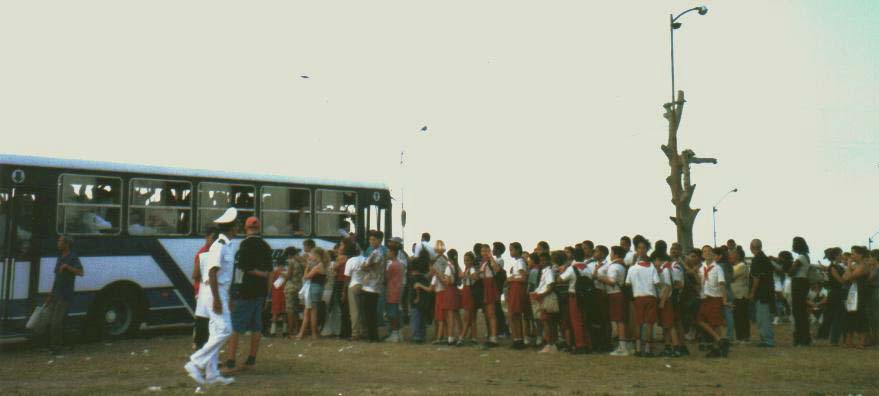
|
| ...the last for 190 route!! |
Bus service is most held by the guaguas, that operate with route numbers and only stop at specific paradas
(bus stops).
To prevent breakdows, city bus drivers
often limit the number of passengers they carry and the conductor will stop letting people aboard as soon as limit is reached
this situation often induces disagreement and light fights between hurried passengers
I fronted this kind of situation
with a positive way of thinking, because if you dont catch that bus, maybe have to wait an hour for the next one ... and get
time for reading, writing or why not...making a new friendship!!
Cost: 40cents of cuban peso or 1 cuban peso in case of particular Omnibus.
There are several
tipes of taxis!!
-Shiny news tourist taxis
cluster at the large hotels try not to take them, their price is about US$1 a kilometer.
-Lada
taxis operated by Cubataxi or Panataxi chains are considerably cheaper, use them to get
from airport or in an emergency.
- Old, privately owned
American cars called máquinas. Are highly recommended, you pay about 10 to 20 cuban pesos for a considerable
distance. These máquinas often carry many persons who goes by an specific route that you may ask first. One famous stand of
these old cars is front El Capitolio.
- Bicitaxi are
3 wheel tricycles with a double seat behind the driver. Are very common in Havana and other main cities. Must be careful cause some of this bicitaxis ask ridiculous amounts for tourists even though Cubans pay about five
pesos.
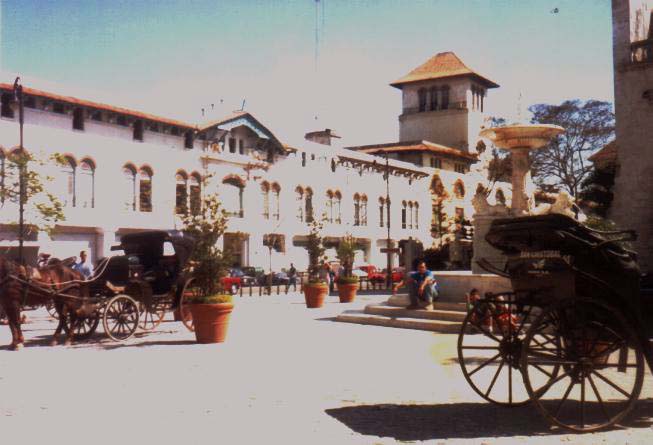
The horse carriages
you see at touristical places are government owned and charge about US$5 per persons for mini-tours.
Travel to other cities
is held by trucks called camionetas, that often leaves from a specific
station.
Cost:
5 to 10 cuban pesos, depending the distance.
| Truck Tour: Habana/SanAntonio/GuiradeMelena |
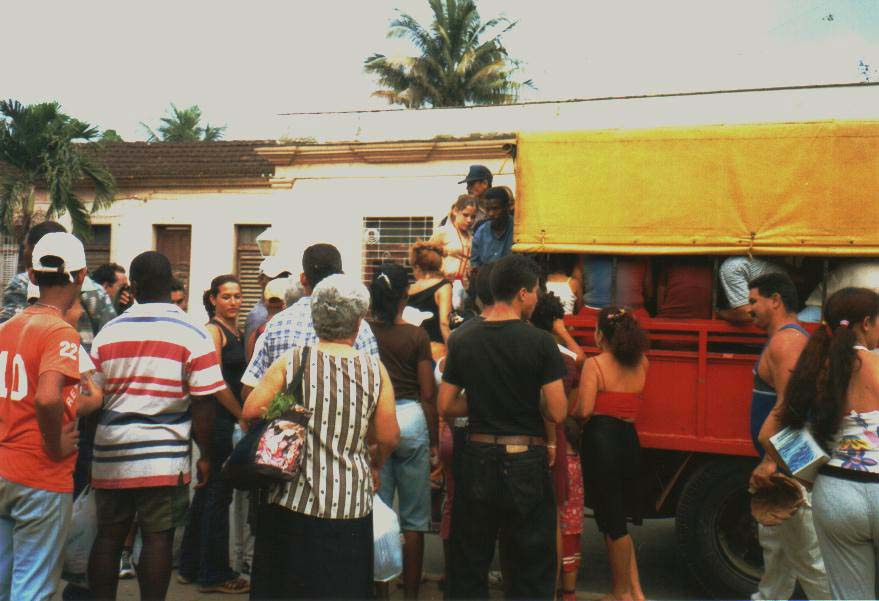
|
| Cost: about 5 cuban pesos |
Train
service has declined in recent years due to a shortage of fuel, aging equipment and
deteriorating railwail lines. But it still used. Some trips are even relaxed and train stations tend to be close to the city
centers.
| Train Station at Guira de Melena |
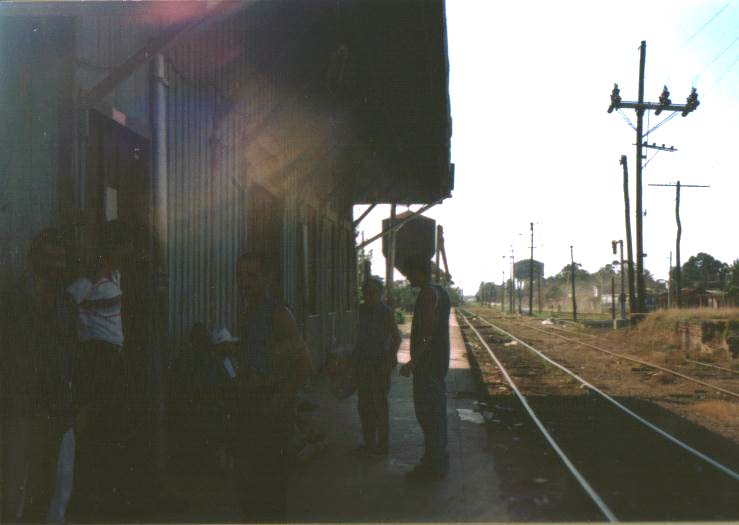
|
| Gas Station at Guira de Melena |
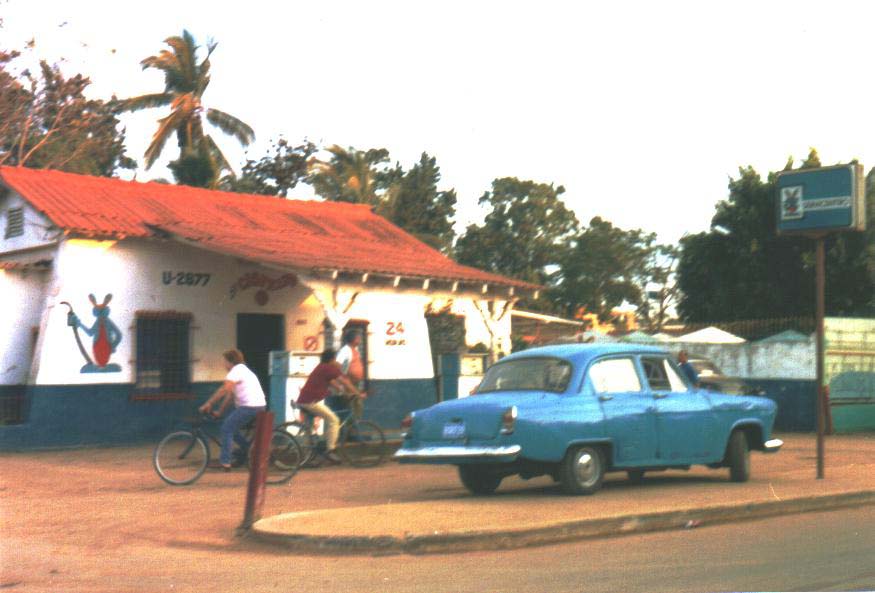
|
| The famous Granma Boat !! |
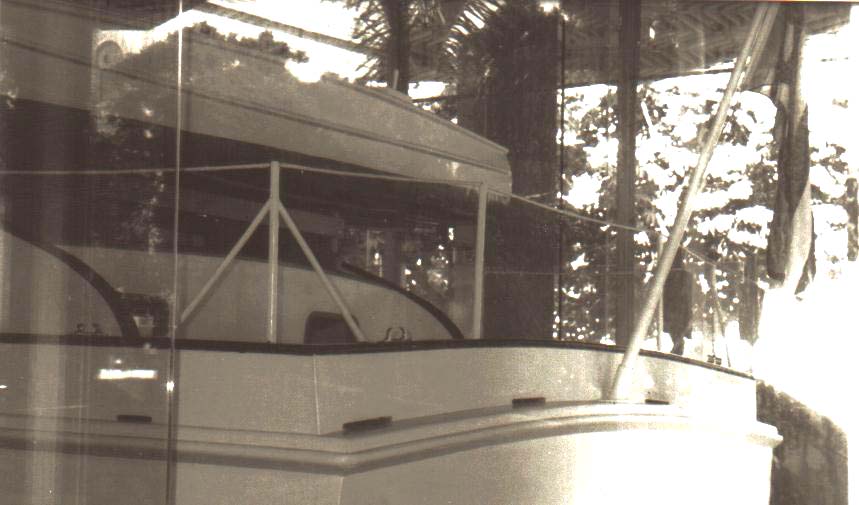
|
| suposed to held only 11 passengers... |
 |